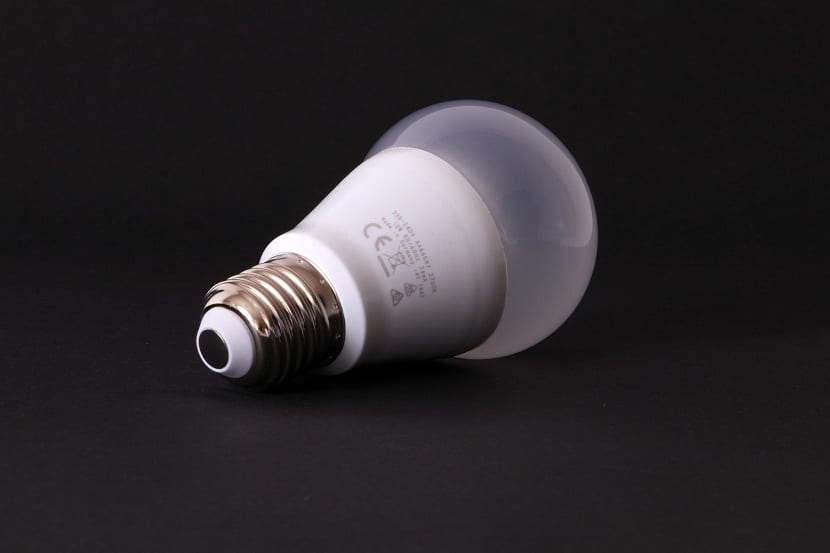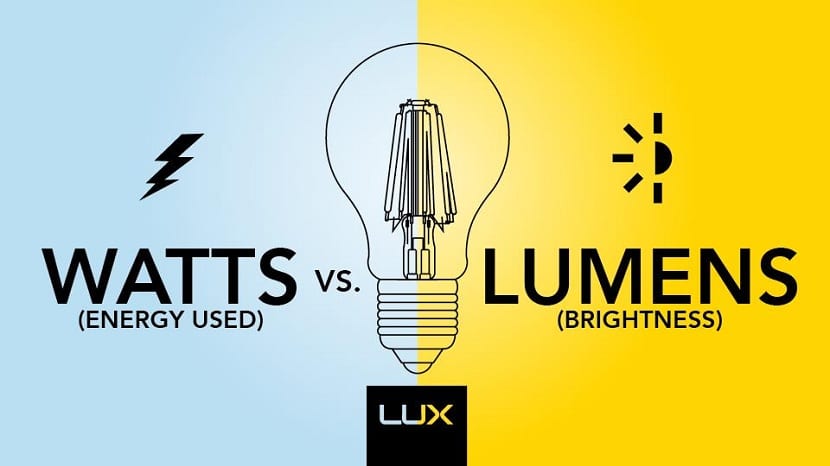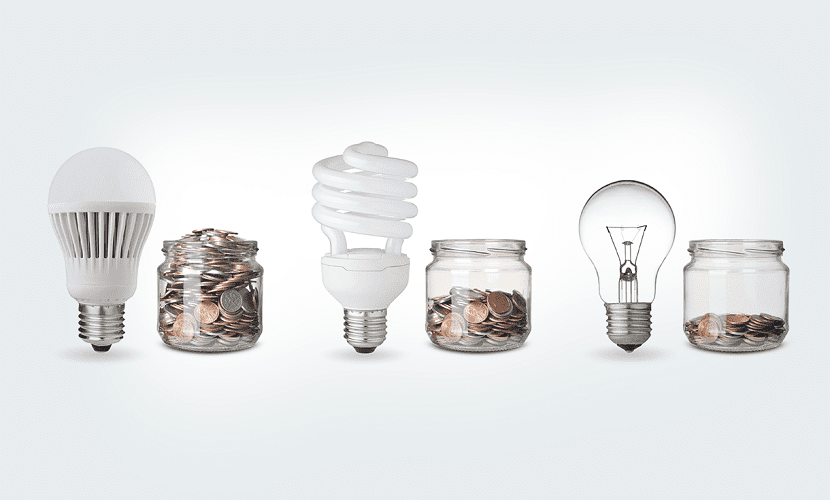
The amount of light emitted by a bulb through watts. This ended with the advent of LED bulbs. Today the power of a lamp is measured in lumens and it is nothing more than the amount of light it emits. Watts are used to measure the energy consumed. When we decide to buy a light bulb or a lamp we need to know these two concepts to know if we are interested or not. On the one hand, how much light is it going to provide us depending on the use we want to give it and the energy consumption so as not to get surprises in the electricity bill.
Therefore, in this article we are going to tell you everything you need to know about lumens and how to compare it to watts. Do you want to learn how to choose well which bulbs you need for your home? Keep reading that we tell you everything.
What are lumens and how are they measured?
When we decide to buy a light bulb we need to know how much light it is going to provide us and what is its consumption. Previously we had to estimate that through its power. A 60W bulb shines more than a 25W one, obviously. However, it is not an exact measurement, since what watts are actually measuring is the energy consumed by the bulb. If we buy an LED bulb, we can light more with the same watts.
For these reasons lumens were born. Knowing the relationship between the lumens and watts of a light bulb to know both what it lights up and what it consumes is somewhat complicated. It depends a lot on the technology used for its manufacture. Two bulbs with the same wattage may shine differently just because of the way they were designed. For example, a low-consumption light bulb, an LED or a halogen is not the same as a conventional one.
This is where we are asked to want to know how much light power we need for a room without the electricity consumption causing the electricity bill to shoot up. Although a lighting study is needed to optimize consumption, it is possible to extrapolate some data to our home where it is not so necessary to take into account consumption to the millimeter.
The lighting study is carried out for commercial establishments, soccer fields and other public places where it is necessary to have artificial light for many hours a day. It is then where it is worth counting to the millimeter the amount of light necessary for a good stay and that helps not to consume too much electricity.
At home is another story. So we are going to learn how to differentiate between lux and lumens well.
What is a lux versus a lumen

When we are going to buy a lamp or light bulb we need to know how much light will be needed in the room that we are going to light so that we do not have bad light or are over. The amount of light a room needs is the average illuminance or lux. As usual, The rooms that need the least luxes are the bedrooms with 150 and the one with the most the living room with 300.
To get an idea of the amount of luxes that the sun has compared to artificial light, we can see how it illuminates us with an intensity between 32.000 and 100.000 luxes compared to our sad 300 luxes in the living room.
On the other hand, we have the flow of energy that a light bulb uses and it is what is measured in lumens. One could say that one lux is one lumen per square meter of illuminated surface. With these values it is easy to think that we can measure the room and know its surface and, as a result, buy a light bulb that has the necessary lighting. However, this is not so simple, since we must also take into account the height at which we are going to place the bulb.
The first thing we need to know is the room's need for light and prioritize comfort. It is useless to buy a bulb with low illumination in order to save light if we are not going to be well with it. The colors of the room are also determining factors when choosing the lighting of the bulb. In lighter colors, we will need less lumens and vice versa.
How to choose our bulb

A light bulb may come with a "60 lumens" indication. Perfect but what does this indicate? Manufacturers are not yet aware of the possible ignorance of the population in light of the recent change in measurement. Customs make us look at the watts of a bulb, when we have now discovered that we only measure consumption and not how much it illuminates.
To help achieve the perfect bulb we must know that An LED bulb usually generates between 60 and 90 lumens. To know more or less a priori what light power an LED bulb will give us before buying it, we use the following formula:
Actual lumens = number of watts x 70.
70 is an average value that matches the vast majority of bulbs sold in the markets. This is how we can deduce that a 12W LED coil will have a light output of 840 lumens. This is the same as a conventional 60W incandescent bulb. While a conventional one is consuming 60W of power, the LED is lighting the same, with only a power of 12 W.
If we decide to change the light bulbs in our house, we will be saving 48W per bulb, approximately. One of the problems that LED lighting offers is the opening angle that the light offers. To know all this well, it is better to look at the specifications and the use recommended by the manufacturer that comes in the purchase box. In this way we will be able to orient ourselves better in which situations it is good for us or not.
The good news is that LED technology improves every day, so they are already capable of lighting large rooms with just one light bulb.
I hope these tips help you to better choose the optimal light bulb for home consumption.
